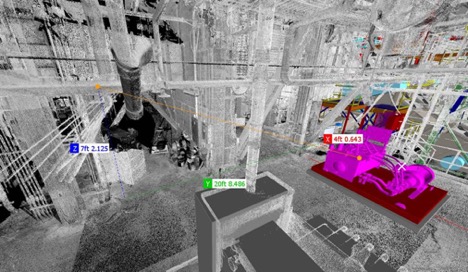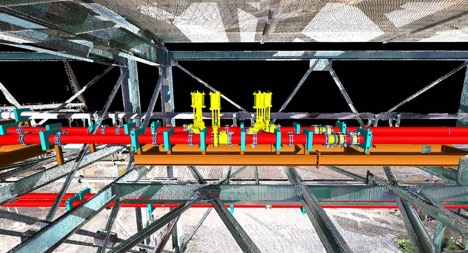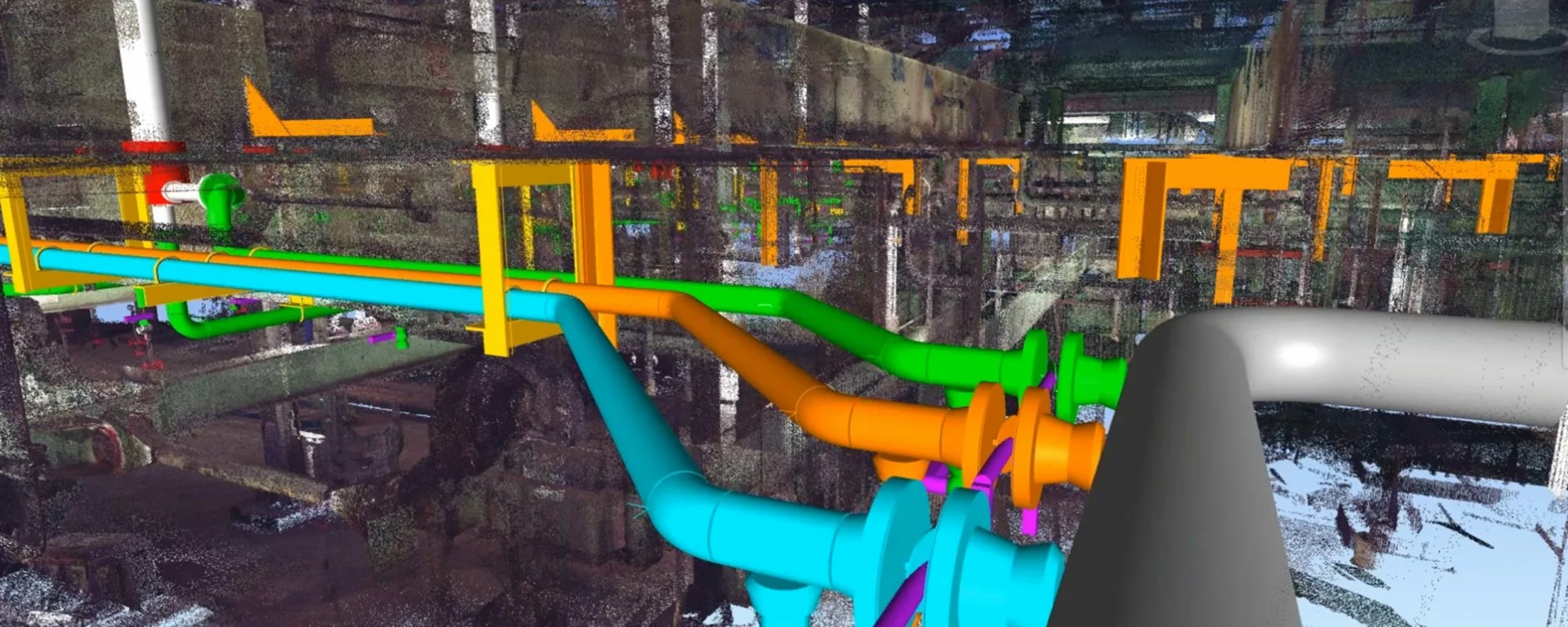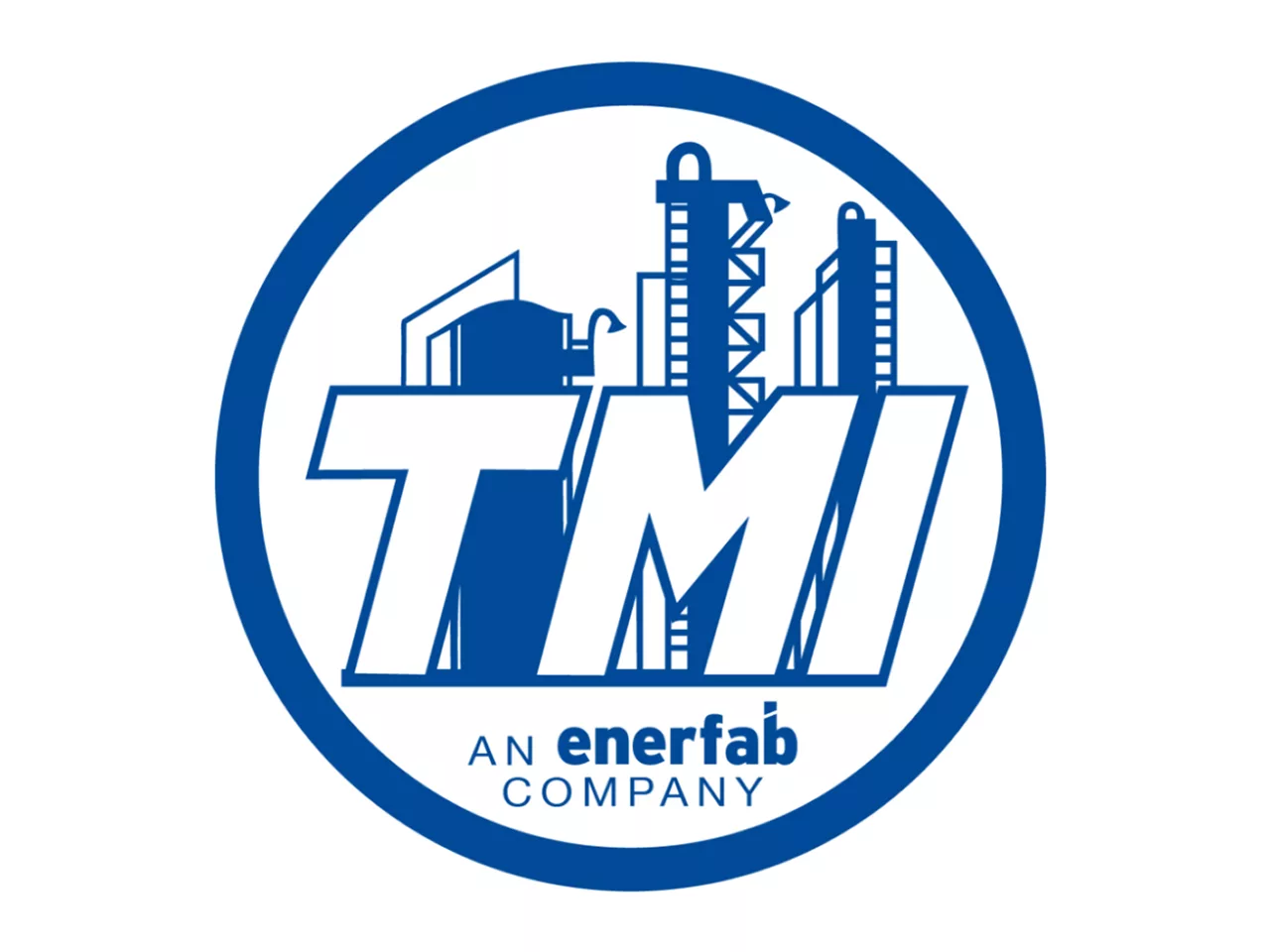Being There Without Being There: The Beauty of 3-D Scanning
Article by Drew Edwards, Senior Mechanical Estimator
Recently Enerfab’s Kansas City office invested in their own laser scanner for creating 3D models of project facilities. The decision to procure the scanner and self-perform this operation was made after years of seeing the benefits of 3D laser scanning using rented units and owner-provided point cloud files.
As a technology new to the capital construction industry, 3D scanning receives its fair share of raised eyebrows and skepticism. We already have design drawings and 3D modeling, so where’s the benefit?
However, traditional 3D modeling processes are slow, expensive, and are only accurate to the design drawings they reflect or the measurements physically taken in the field. But, as those with experience will know, field conditions often differ from design drawing ideals. How often have you encountered a structural member, electrical conduit, or pipe where none had been documented? Extremely frustrating.
Laser scanners can provide accurate 3D environments to owners, engineers, and contractors quickly and cost-effectively. Performing and registering a project scan yields a true-to-life 3D model that enables anyone using it to “be there without being there.”
In this way, laser scanners reduce re-work and project risk by allowing project estimators to recognize clashes and accurately design systems that fit within the environment where they will be installed.
What’s it called? Monorail!
A great example of 3D scanning enabling the right solution the first time is this recent project: Enerfab was tasked with designing a monorail system to lift five control valves and rig them to grade for maintenance. We used a laser scan to work with our engineer in the design and estimating process.
We were not provided structural drawings for the project, so without the laser scan, it would have been natural to assume this was a single rail mounted above the valves. The laser scan helped us recognize that we would need to install multiple steel members to accomplish the task, and our estimate reflected the most accurate design possible.

In another case, we were instructed to field route small-bore piping but were not provided drawings for the existing system to determine routes and distance. Using a laser scan, we were able to locate our tie-in points in the point cloud and use 3D measuring tools to determine how far away the associated equipment was located.

Observing from a (social) distance.
Another unique benefit of laser scanning is its ability to enable project stakeholders to observe project progress without being on-site. Laser scanners provide 3D photographs that can be shared through a cloud portal, allowing all project stakeholders to “walk the project” remotely.
Not only is this a useful tool in the context of our current precautions to keep everyone safe from COVID-19, but it will continue to prove helpful ever after as On-site visits can be costly and potentially disrupt workflow.
With 3D scans and photographs to monitor and track, all project stakeholders can observe the progress and raise concerns as they come up.
Being there before it’s there.
Maybe the most exciting aspect of 3D scanning comes very early in the process. By scanning and creating a 3D environment, we can walk project owners through a virtual model of what will become the finished project.
Not only does this provide some much-needed “wow factor” — imagine seeing your project in its complete form in three-dimensional glory — but it also enables estimators to give in-depth, interactive answers to questions that come up about the bid. “Why did you do it that way?” “Let me show you …”
The 360º wrapup.
At the Kansas City Enerfab office, we’re excited about the increased possibilities owning our scanner will provide. We, and our customers, have already benefited so much from the technology.
In short, 3D laser scanning can deliver benefits such as:
- Better estimates by more accurately quantifying the scope of work, site conditions, access, travel paths, etc.
- Reduced rework by being able to plan installations ahead of time from the office more accurately
- Reduced material cost by purchasing based off data-driven quantities instead of best guesses
- Design optimization by recognizing site interferences and clashes, and choosing the best routes for electrical raceway and pipe installations
- Reduced time for staff creating as-built drawings
- Enhanced proposals for clients allowing the benefit of offering a laser scan point cloud once Enerfab’s been selected for contracts
Experience these, and I think you’ll agree: 3D laser scanning will become another part of the standard of excellence in fabrication, construction, and maintenance.
About Drew Edwards
Drew is a Senior Mechanical Estimator for Enerfab’s Midwest office in Kansas City, Missouri. He joined Enerfab in the fall of 2018, bringing a decade of estimating and field supervision experience with him.
In addition to his day-to-day responsibilities performing construction estimates across all of Enerfab’s core markets, Drew serves as a member of Enerfab’s corporate technology committee and is key in identifying, reviewing, and implementing new ways of working across our organization.




